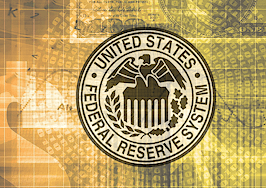- The last couple of weeks have been disconcerting -- how have we seen such a huge decline in rates without a bounce-back?
- Last week, rates had several propellants to jump, most of them from overseas: The U.S. economy is OK; Europe is not.
It is reassuring when the world behaves as it should. The last couple of weeks have been disconcerting — how have we seen such a huge decline in rates without a bounce-back?
It’s okay now. Rates are rising. The jump last week had several propellants.
The first is simply the nature of markets: any big move begets a counter-move. In 10-year T-note terms, from June 1 at 1.83 percent down to 1.36 percent (July 8) and now back up to 1.59 percent. In mortgage rate terms, 3.625 percent to 3.25 percent (for about an hour), back to 3.50 percent.
However, that “retracement” does not answer the questions everyone has: Will we go back down, and if so, when?
Economic data says “not soon”: Since the rate plunge intensified upon Brexit, essentially every new U.S. point of data has been stronger than estimated — jobs, Institute of Supply Management (ISM) indices, small business, retail sales, the works.
The full answer lies overseas.
U.S. 10-year Treasurys and German 10s have kept a fairly consistent yield spread, 160bps-plus. At their deepest declines last week, German 10s reached minus-0.19 percent.
In just the last two days of last week, German 10s lost 5.5 percent of value, their yield up to 0.009 percent (Lord, is this weird to write, or what?). German 10s are up 20bps in yield in three days, and so are we.
Who is driving? They are. Why the spread? The U.S. economy is OK; Europe is not. The only surprise is the spread between the two bonds is as tight as it is: If U.S. bonds and mortgages were priced on U.S. conditions alone, U.S. rates might be a full percent higher than now. The Fed is restraining tightening for fear of damage it might do overseas.
NOTE: conspiracy theory. German yields may have exploded last week because the European Central Bank (ECB) is pushing up on negative rates. They have been more destructive than helpful.
Brexit did change one thing: it added urgency to stimulus. The Bank of England had no plans to ease, in fact on hold preparatory to tightening, but now it will ease. The ECB is under pressure to make life easier for the remaining prisoners held by the EU, and EU governments will soon agree to bank bailouts in contravention of treaties. China has used the post-Brexit currency-market chaos to devalue, which forces its trading partners also to stimulate and devalue, Japan leading.
Shinzo Abe won an important election despite the flat bust of Abenomics. In Round Two the Bank of Japan will include both fiscal and monetary stimulus, some inventive version of “helicopter money.” One proposal: “shopping coupons.” Maybe 1,000 yen per household ($100), free to spend on anything — but with an expiration date, to force spending now.
But the gazillion yen/euro/yuan/dollar question, even if the coupons do add to spending: Will the add have durable effect on the economy, jump-starting it?
Every public affairs economist laments low demand worldwide. The traditional, allegedly Keynesian fix, today championed by Larry Summers: do whatever is necessary to add to demand, get the consumption-supply machine going again. Monetary and fiscal, together by helicopter or carrier pigeon — BOOST DEMAND!
The rebound in rates this week has been just like all of the others at the prospect of new stimulus. Frustrated market cranks then say, “See, it doesn’t work. Rates are higher.”
Ignore that grousing. Rising rates have been a perfectly sensible reaction to new stimulus — it might work! Not just buy time, but work. Then when stimulus fades (every time so far), back down go rates.
Why the failure of the old demand elixir? Because the world is drowning in supply, and demand can’t possibly boost to meet it. We need for China to shut a substantial chunk of production (steel, coal, generation and now refined petroleum products). We need for Germany to become a net-consumer instead of a compulsive net-supplier.
Neither is going to happen. So we’re stuck.
In the first 90 days of 2016, U.S. corporations bought back $160 billion in their own stock. Not to be tricky, but in a world flooded by supply, it’s crazy to invest in more production capacity.
It may take a while, but as stimulus fizzles, back down we’ll go. Meantime, lock any deal that works. If the conspiracy theory is right — central banks pushing up on negative rates — then we’ve seen the floor. Unless the U.S. weakens. (But don’t say that.)

US 10-year T-note in the last six months.
US 10-year T-note in the last six months. The snap-back in the last week has been more violent than the one at the end of June, but not necessarily a trend change — unless the conspiracy theory is in play.

US 2-year T-note in the last two years
US 2-year T-note in the last two years, expectation of a Fed hike coming back, but nothing like the Fed’s fierce (and silly) jawbone.

Not back to the heady days of 2014, but crawling back upward all spring.
Not back to the heady days of 2014, but crawling back upward all spring.
Lou Barnes is a mortgage broker based in Boulder, Colorado. He can be reached at lbarnes@pmglending.com.












